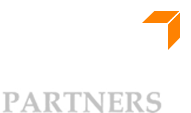
30 Jun How To Prepare Your Business for a Second Wave of COVID
Many areas of the United States have moved to the green phase of reopening, and businesses everywhere have returned to work. Unfortunately, however, COVID-19 is not gone and a vaccine has not yet been created. This means that the chances of a second wave is high, and some areas have already seen a resurgence in the number of cases.
Luckily, businesses have more time to prepare now than they did when coronavirus first hit the US. As your business reopens and employees return, you should already have a plan in place to welcome them back safely. Now is also the time to plan for how your business will react if a second wave of COVID comes to your area.
For more on how COVID-19 has affected hiring and other industries, check out our free eBook, Post-Pandemic Talent Acquisition.
How To Prepare for a Second Wave of Coronavirus
-
-
- Follow Federal, State, and Local Guidelines
- Consider Risks
- Implement Safety Procedures
- Communicate with Employees
- Improve Upon Your Initial Response
-
Follow Federal, State, and Local Guidelines
First and foremost, follow any government guidelines on the national, state, and local level to ensure that your business is not in jeopardy. Failure to comply with government guidelines can result in the loss of your business license in some areas. Plus, your state and local government have the most information in terms of the spread of the virus, so you should defer to their judgement to keep your employees and customers safe.
Keep tabs on local reopening guidelines and, if necessary, re-closing guidelines as the situation progresses. Check in regularly so that you are fully aware of COVID-19’s effect in your area and so that you can respond efficiently.
Consider Risks
When planning for the possibility of a second wave, consider what risks your specific business faces. You have likely done a risk assessment for reopening, so use the same standards for the potential resurgence.
Consider how at-risk your business is, based on how many people are in your office or workspace, whether customers or clients regularly visit, specific employee risk factors, and more. Look for high risk areas within your office, like bathrooms, doorknobs, and other shared spaces or appliances. Once you understand the risks, you can plan for risk avoidance or set benchmarks for when you need to send employees back to remote work for their safety.
Implement Safety Procedures
Your reopening plan should already consider health and safety procedures for staff and customers. If a second wave spikes in your area, you may need to implement more stringent safety measures or bring back those that you have stopped prioritizing.
Possible safety procedures include temperature checks, mandatory masks or other PPE like gloves, social distancing within the office, commercial cleaning, and so on. If your workforce is back to a normal schedule, you may have to consider switching to a staggered schedule where half the office comes in on one schedule and the other half alternates. If it comes down to it, you may need to switch back to remote work again.
Set definitive benchmarks to track when you should take which actions. You can choose to closely follow state or local recommendations, track the number of cases in your area to assess risk, or even ask employees for input about what they are most comfortable with. You should also be prepared for the possibility of employees getting the virus, and have a response plan in place to quarantine anyone who came in contact with that person.
Communicate with Employees
Throughout the pandemic, communication has been key. Communicate with your employees now about what your strategy is if a second wave hits so that they are prepared for the possible changes to come. It may also be worthwhile to gather their opinions on your original response to COVID-19, your reopening strategy, and their thoughts on what to do if cases spike again in your local area. Their input is important since their safety is potentially on the line, and it’s better to ask than to assume their perspectives.
It’s also vital to communicate if any roles are in jeopardy. The pandemic has affected all businesses differently, but the high level of unemployment and the shift in the economy is a serious threat to many. If jobs are at risk of being lost or even temporarily furloughed, try to communicate that in a manner that is compassionate but transparent. Discuss how to approach this conversation with HR first if necessary.
You should also communicate with your customers and clients, of course. Some businesses may be able to switch between in-person and remote work without really affecting your client base, but this is not true for all companies. Keep customers and clients updated if your strategy affects them.
Improve Upon Your Initial Response
When the pandemic first hit, businesses had little-to-no time to plan how they would adapt. Now, you have the benefit of hindsight to guide your decisions moving forward. Learn from your business’ initial response to COVID and make improvements now that you have more experience with and information about working through a global pandemic.
Your response in this time is important; it shows your employees that you are concerned for their safety, primarily, and affects your employer branding and how your business will be perceived. Plan ahead so that you are as prepared as possible to help your business thrive, whether or not the second wave affects your company.
For help hiring post-pandemic, contact ORS Partners. For more information on hiring in the post-pandemic world, check out our free eBook.


